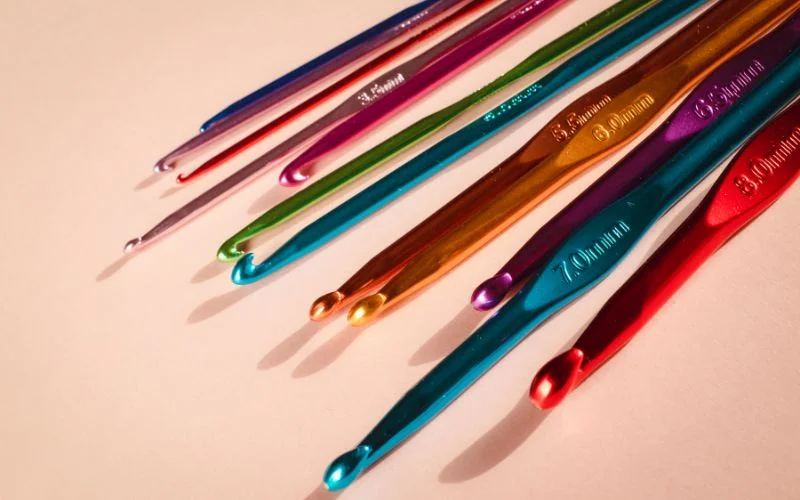In this article:
To achieve true mastery in crochet art, you simply must learn about the tools you’re using.
Something as simple as a crochet hook size chart can be a great reference when looking for the right tool for your next project. In this article, you’ll learn all about crochet hooks for beginners in general, as well as about their types and sizes. We will also compare the most popular sizes and recommend the types of projects you can use them for.
This post contains affiliate links.
Find the best selection of quality yarns for crochet in Katia’s online store.
The Importance Of Using The Correct Crochet Hook Size
Let’s start with what might be obvious for some, but is definitely worth mentioning – why should I bother about hook sizes at all?
Well, the answer is simple – because hook size is one of the most significant factors impacting your crochet work. If your hook size is off, the project won’t look the way it should, or the crochet fabric won’t behave the way you want it to. Of course, hook sizes go hand in hand with yarn weights and should be chosen with a particular yarn in mind.
What will happen if I choose the wrong hook size?
Frankly, your gauge will be off, which means that your swatch will be too tight or too loose in relation to what the pattern recommends. Even if you’re not following a particular pattern, you should follow yarn manufacturers’ recommendation for the hooks size (or range) that you should use with this type of material.
Adhering to the suggested hook size will help you achieve the desired outcome, whether it’s a cozy blanket, delicate doily, or fashionable garment.
Choosing a crochet hook that is either too small or too big for your project can have significant consequences:
Too Small Hook Size
It will likely result in a very tight and dense crochet fabric and a high chance that the stitches will be distorted.
- Tight Stitches: Using a hook that’s too small for your yarn can result in tightly packed stitches. This not only makes the fabric dense but also difficult to work with.
- Stiffness: Your crocheted fabric may become stiff and inflexible when using a hook that’s too small. This can be uncomfortable for wearables and unappealing for items like blankets and shawls.
- Difficulty Maneuvering: A small hook can make it challenging to insert into stitches, especially if your tension is naturally tight. This can lead to frustration and hand fatigue.
Too Big Hook Size
It will produce very lacy fabric, in which the stitches are not dense enough and will most likely lose their shape.
- Loose Stitches: A hook that’s too large for your yarn will create loose, open stitches. While this might be desired for lace projects, it’s not suitable for items requiring structure.
- Lack of Warmth: Loose stitches provide less insulation. This can be problematic for items like winter scarves or blankets, which are meant to keep you warm.
- Yarn Depletion: Larger hooks require more yarn to complete a project. Using a hook that’s too big can lead to running out of yarn before your project is finished.
It’s essential to match the hook size to the yarn weight and the intended pattern gauge. Following the pattern’s recommended hook size is a safe practice.
However, keep in mind that personal tension plays a role. Some crocheters may need to adjust hook sizes slightly to meet the pattern’s gauge, ensuring a well-fitting and visually appealing finished piece.
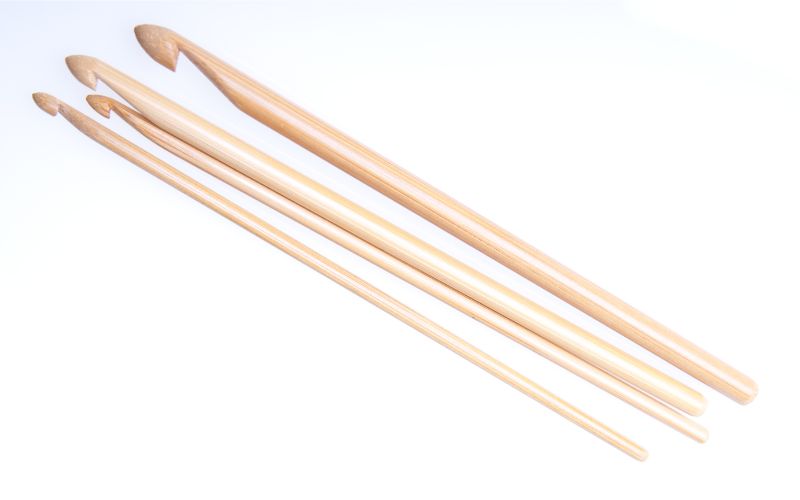
Anatomy of a Crochet Hook
- Point – this is the part you insert into the stitches.
- Throat – the narrowing part that keeps the yarn when you guide it through the stitches.
- Shaft – this element determines the hook size and the size of the yarn loops.
- Grip – the middle part of the hook where your thumb rests; often a place where the size is indicated.
- Handle – bottom part of the hook, which you hold in your hand while crocheting.
You may also find tunisian crochet hooks, but they are not covered in this article. You may also find tapered hooks or inline hooks, which have differently shaped point.
Types of Crochet Hooks
We can divide crochet hooks into categories, depending on their type or material. Each one has its pros and cons, as well as works great for different types of projects.
Explore them in this article:
Crochet Hook Sizes
There are four sizing systems you may stumble upon, but not all of the sizes reflect one another.
- US crochet hooks
- Metric (European) crochet hooks
- UK crochet hooks
- Steel crochet hooks
Standard Crochet Hook Size Chart
Below you can see the chart outlining the sizes across standard crochet hooks. As you may suspect, the smaller the size of the hook, the smaller the weight of the yarn that goes with it. Take a look at these size conversion charts, so that you never have problems with sizes again.
| EU Metric Size | US Size | UK Size |
| 2 mm | 14 | |
| 2.25 mm | B/1 | 13 |
| 2.5 mm | ||
| 2.75 mm | C/2 | 12 |
| 3 mm | 11 | |
| 3.25 mm | D/3 | 10 |
| 3.5 mm | E/4 | 9 |
| 3.75 mm | F/5 | |
| 4 mm | G/6 | 8 |
| 4.5 mm | 7 | 7 |
| 5 mm | H/8 | 6 |
| 5.5 mm | I/9 | 5 |
| 6 mm | J/10 | 4 |
| 6.5 mm | K/10.5 | 3 |
| 7 mm | 2 | |
| 8 mm | L/11 | 0 |
| 9 mm | M/13 | 00 |
| 10 mm | N/15 | 000 |
| 12 mm | P | |
| 15 mm | ||
| 16 mm | Q | |
| 20 mm | S (19 mm) |
PIN IT!
Save it for later on Your Pinterest board.
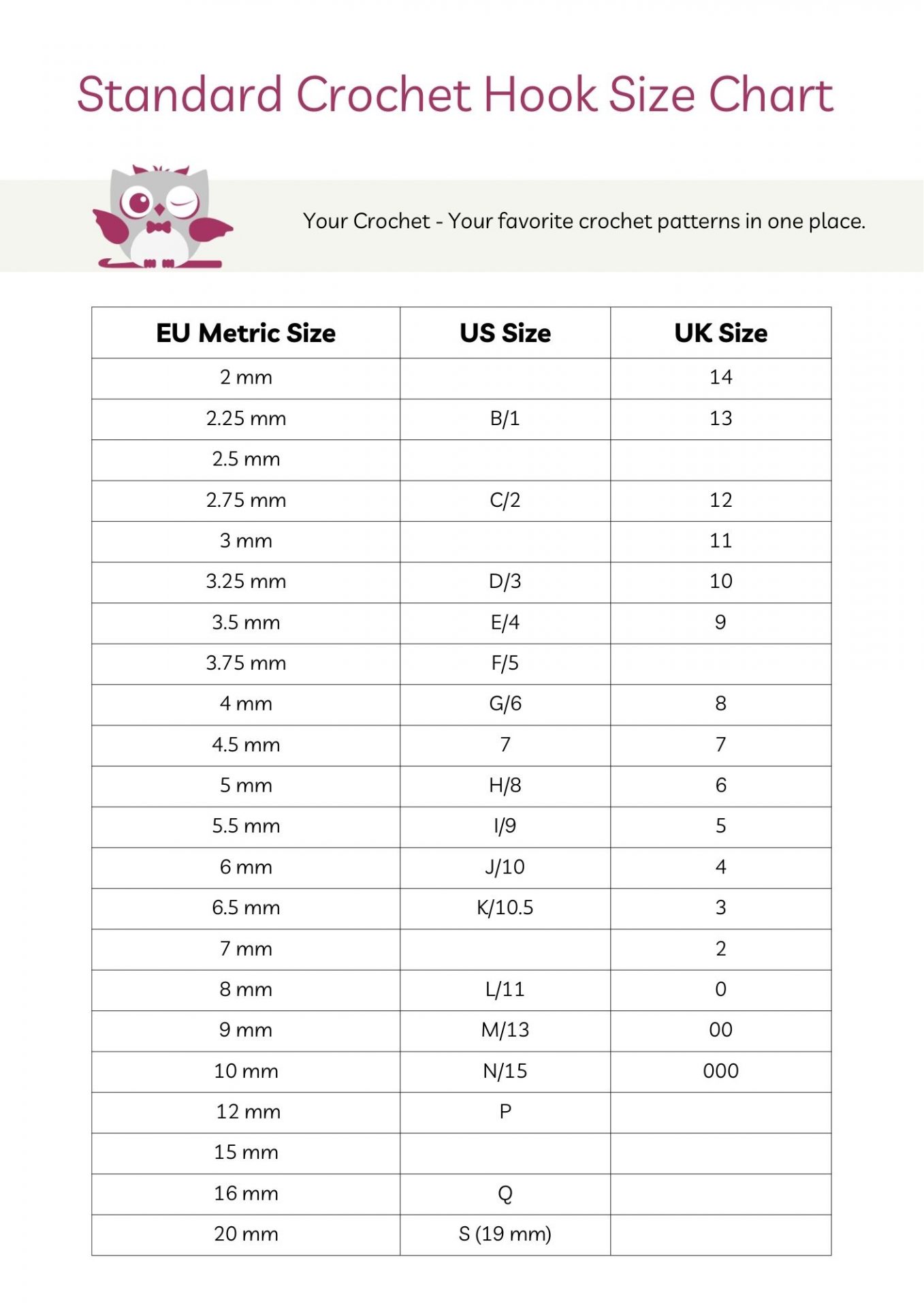
Steel Crochet Hook Size Chart
As I mentioned before, we use steel crochet hooks for intricate lacework, so there’s a different system to rate their size.
| EU Metric Size | US Size |
| 3.50 mm | 00 |
| 3.25 mm | 0 |
| 2.75 mm | 1 |
| 2.70 mm | 00 |
| 2.55 mm | 0 |
| 2.35 mm | 1 |
| 2.25 mm | 2 |
| 2.20 mm | 2 |
| 2.10 mm | 3 |
| 2 mm | 4 |
| 1.90 mm | 5 |
| 1.80 mm | 6 |
| 1.75 mm | 4/0 |
| 1.70 mm | 5 |
| 1.65 mm | 7 |
| EU Metric Size | US Size |
| 1.60 mm | 6 |
| 1.50 mm | 8/7/2 |
| 1.40 mm | 9/8 |
| 1.30 mm | 10 |
| 1.25 mm | 9/4 |
| 1.15 mm | 10 |
| 1.10 mm | 11 |
| 1.05 mm | 11 |
| 1 mm | 12/6 |
| 0.95 mm | 13 |
| 0.90 mm | 14/8 |
| 0.85 mm | 13 |
| 0.75 mm | 14/10 |
| 0.60 mm | 12 |
PIN IT!
Save it for later on Your Pinterest board.
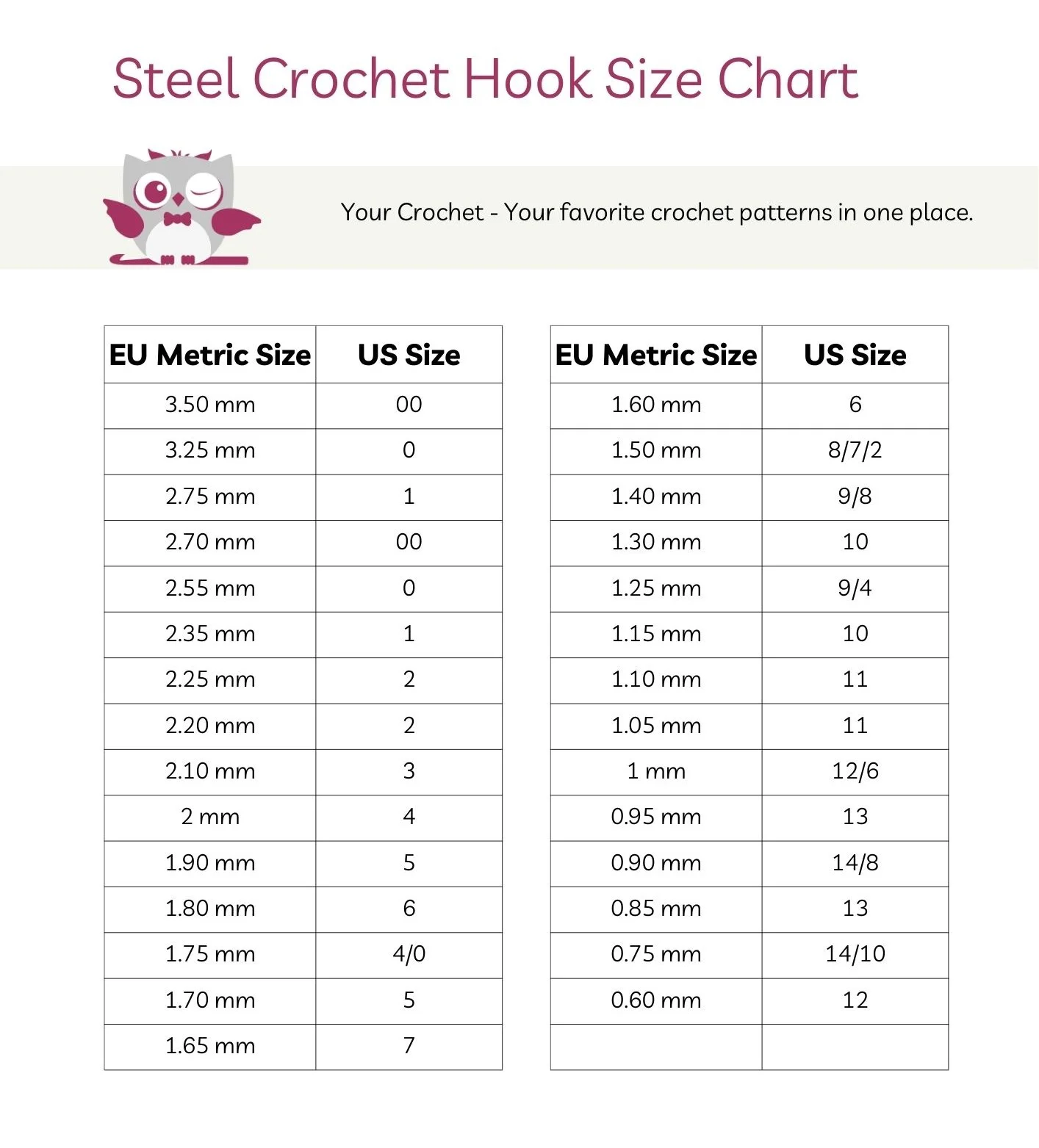
How to Choose The Right Size of Crochet Hook
There are a few ways to determine what size of hook you need for your project, so let’s see what you can do.
- Follow a crochet pattern and choose exactly the size of the hook and the type of yarn the designer recommended.
- Check the yarn label to see what size of hook the manufacturer recommends.
- Make a couple of gauge swatches using different hook sizes to determine which one looks and works the best for your project.
Remember that there may be differences between two hooks of the same size because the material and type of manufacture matter. It happens especially with very small differences, such as fractions of the millimeters, but it doesn’t really affect the work.
What Yarns Work With These Crochet Hooks?
We can create ranges to guide you on which crochet hooks fit which yarn weights, but in the end, the results may differ. For example, worsted-weight yarn requires a 4.5 – 5.5 mm hook, but lighter yarns need smaller hook sizes. Remember that the information below is for guidance only, and always check your gauge when starting a new crochet project.
- Lace Weight Yarn – 1.4 – 2.2 mm
- Super Fine Yarn – 2.25 – 3.5 mm
- Fine Yarn – 3.5 – 4.5 mm
- Light Yarn – 4.5 – 5.5 mm
- Medium Yarn – 5.5 – 6.5 mm
- Bulky Yarn – 6.5 – 9 mm
- Super Bulky Yarn – 9 – 15 mm
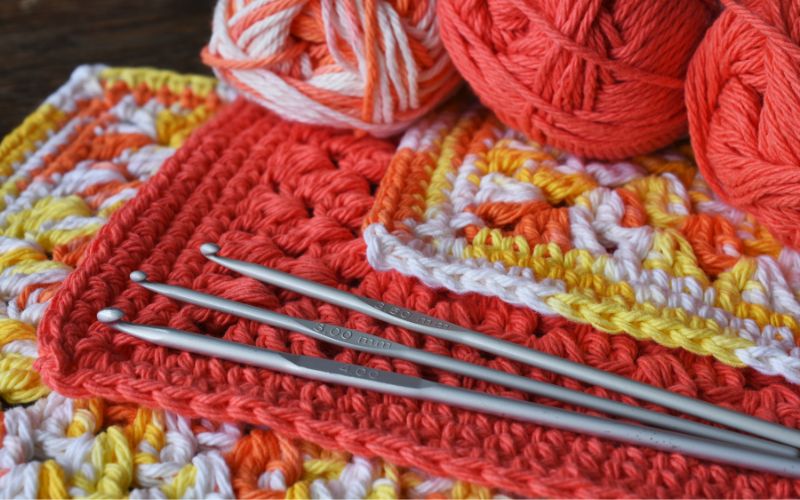
Conclusion
Choosing the best crochet hook size may be tricky, but the experience will help you. Once you try working with a range of them, you’ll know which size goes with what weight of yarn. You will also know what type of hook works best for you because they differ in materials, weight, and level of comfort in crocheting they provide. To check the size of the hook you have, use the hook gauge tool.
Remember that you can always find hook size recommendations on the yarn label, or in the crochet pattern you are following. Check which sizing standard was used for your tools, and remember to use our tables to translate any foreign markings.
We would love to see the wonderful items you make with your new skills, so share your work in our Facebook group!



